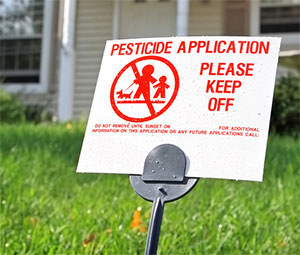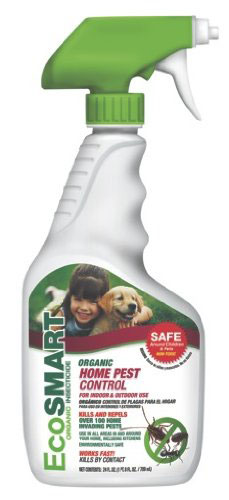The Dirty Dozen
~ Pesticides & Herbicides ~
Originally, before the advent of pesticides, antibiotics, hormones, and chemical fertilizers, the foods we ate were inherently organic. Large-scale farming with chemicals did not begin until food processing and industrialization took off around the time of World War II. Today, large-scale farming heavily relies on dangerous chemicals to grow produce, rather than working with the natural cycles of the earth.
 Modern agriculture and its chemical methods have contributed to the depletion of much of the essential minerals and nutrients of the world's soils. Our vegetables, fruits, and food items grown are not only deficient in important nutrients that used to be present in much higher amounts, but they are also filled with chemical pollutants (agrochemicals) that contribute to chronic disease in both humans and animals.
Modern agriculture and its chemical methods have contributed to the depletion of much of the essential minerals and nutrients of the world's soils. Our vegetables, fruits, and food items grown are not only deficient in important nutrients that used to be present in much higher amounts, but they are also filled with chemical pollutants (agrochemicals) that contribute to chronic disease in both humans and animals.
There is a direct correlation between the skyrocketing rates of cancer, diabetes, heart disease, obesity, autism, and the industrialization of our food. Pesticides are now present in almost all commercial produce, and when we consume them, we are consuming toxins. They put a heavy burden on the immune system and the elimination organs (the liver and kidneys) that must work overtime to excrete these toxic substances. When we overload them on a continual basis, they cannot keep pace. The toxins begin to build in our bodies, and we succumb to disease. The result is a steady increase in liver and kidney disease.

Studies now link the increase in conditions such as ADD & autism with the consumption of both GMOs & foods treated with pesticides. As GMOs are heavily treated with pesticides, this double-whammy creates a recipe for disaster.
~ Institute for Responsible Technology ~
Studies are also now emerging that link the increase in conditions such as ADD, autism, neurological disorders, cancer, and birth defects with the consumption of both GMOs and foods treated with toxic pesticides such as chlorpyrifos and glyphosate. As GMOs are heavily treated with pesticides, this double-whammy creates a recipe for disaster.
Foods sprayed with toxic pesticides carry residue of these poisons in their physical composition, which cannot be removed by washing with water. The regular eating of foods containing these chemicals over time damages the cellular integrity of the body, and increase the likelihood of developing chronic disease.
Pesticides are just one of the 12 Dirty Dozen to avoid
Health studies have conclusively linked pesticides to:
Preservatives can be natural or synthetic. Most preservatives used in refined foods are synthetic. Healthier foods will often contain natural preservatives such as:
- • Neurological disorders
- • Cancer: Brain, Prostate, Intestinal
- • Non-Hodgkin's lymphoma
- • Soft tissue sarcoma
- • Neuroblastoma (childhood tumors)
- • Childhood leukemia
- • Canine lymphoma
- • Fetal death
- • Parkinson's disease
- • Autism
Although most people associate pesticides as something that only kills insects, it is a very broad term that includes:
- Herbicides (a substance that kills/controls weeds and other vegetation)
- Insecticides (a substance that kills/controls insects)
- Fungicides (a substance that kills/controls fungus growth)
- Rodenticides (a substance that kills/controls mice, rats, moles, voles, and other rodents)
- Antimicrobial Disinfectants (a substance that destroys microorganisms such as bacteria, viruses, or fungi on inanimate objects - typically found in products such as antimicrobial liquid soaps, disinfectants, and antiseptics)*
- GMOs (some genetically engineered crops, e.g. BT corn, produce their own internal pesticide, and the EPA officially labels GM corn as a pesticide)
Under US law, a pesticide is also any substance or mixture of substances intended for use as a plant regulator, defoliant, or desiccant.
 Whether on our food or in home and garden products, pesticides and herbicides were created to help us deal with unwanted pests such as harmful insects, arachnids (e.g., spiders, ticks, and lice), rodents, weeds, and microorganisms such as bacteria and viruses.
Whether on our food or in home and garden products, pesticides and herbicides were created to help us deal with unwanted pests such as harmful insects, arachnids (e.g., spiders, ticks, and lice), rodents, weeds, and microorganisms such as bacteria and viruses.
While many insects and animals play are an important part in our environment, they can sometimes be responsible for the heavy destruction of farm produce. Some carry diseases, while others can fatally bite or sting. Insect infestations in our home or garden can be particularly bothersome and we often resort to insecticides to control them.
Many common household products contain pesticides, including:
- Cockroach sprays and baits
- Insect repellents
- Rat and other rodent poisons
- Flea and tick sprays, powders, and pet collars
- Kitchen, laundry, and bath disinfectants and sanitizers
- Products that kill mold and mildew
- Some lawn and garden products, such as weed killers
- Some swimming pool chemicals
Luckily there are far better and safer choices for not only our own health, but the health of our children, pets, and the environment:
When it comes to pests invading our home, we definitely need to have a product of choice. There are several much safer options on the market that are just as effective, yet nowhere near as toxic as the common ones we see today. Examples include the Ecosmart brand, which kills various pests, and is available from many stores including Walmart and Amazon (and the product our family uses for seasonal ants). The smell of the essential oils is quite strong, but not unpleasant.
 Ecosmart Organic Home Pest Control (24 oz. size or 64 oz. size)
Ecosmart Organic Home Pest Control (24 oz. size or 64 oz. size)
- Ingredients:
- - 2-Phenethyl propionate (derivative of peanut oil)
- - Clove Oil
- - Rosemary Oil
- - Peppermint Oil
- - Thyme Oil
- - Other ingredients (water, octadecenoic acid, potassium, salt, lecithin)
There are also other brands that make use of an assortment of essential oils that are extremely effective at insect control. These oils come from plants that have been grown throughout the world in gardens to repel pests.
 One of the best weed control methods available is using a combination of 20% horticultural vinegar mixed with a small quantity of orange oil and dish detergent. All of these products can be found online (20% vinegar can also be found at many farm supply stores) and they are safe and non-toxic when it comes to pets and children.
One of the best weed control methods available is using a combination of 20% horticultural vinegar mixed with a small quantity of orange oil and dish detergent. All of these products can be found online (20% vinegar can also be found at many farm supply stores) and they are safe and non-toxic when it comes to pets and children.
This very effective weed control recipe comes from the Dirt Doctor, a website dedicated to natural and ecosafe gardening methods:
- 1 gallon 30% horticultural vinegar
- 1 oz. orange oil (this 32 oz. bottle lasts a long time!) (pure orange oil only)
- 1 tablespoon biodegradable dish washing liquid
Simply mix the ingredients together in the vinegar bottle and pour into a garden spray container. It is important to use horticultural vinegar as it contains 30% acetic acid. Household vinegar contains a much weaker percentage - usually 5% - and is not strong enough to kill most weeds. After application, weeds will begin to die within 4-6 hours.
This weed control method has many positive reviews (on Amazon alone, reviewers gave it 4.5 out of 5 stars based on over 75 reviews), with many claiming that it does a better job than Roundup when it comes to some of the more invasive and difficult to control weeds.
* Antibacterial & antimicrobial soaps and cleaning products contain chemicals such as triclosan that are harmful. They contribute to lowered immunity in children and an increase in allergies, asthma, and other health conditions by interfering with how our immune system learns from and responds to its environment. Of course, it is important to maintain basic sanitary habits such as washing our hands after going to the bathroom and keeping our homes clean, but our unhealthy obsession with germs and the constant sanitization by scouring, bleaching, disinfecting, scrubbing, and spraying dangerous chemicals around our household is dangerous for our health.
...
